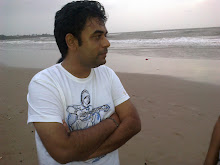
A face, a gesture, a moment, a desire - Frozen in Time
Memory is often of deep interest to artists and philosophers. It is nevertheless difficult to portray in works of art. The fact that a film exists that meditates on the nature of memory, disguised as science fiction, is enough to increase curiosity. La Jetee, a short film made in 1962, is remarkable for being made completely out of still images. In the words of filmmaker Chris Marker it is a photo-roman (a photographic novel). It tells the story of a man “haunted by an image of his childhood”. As a kid, the protagonist had seen a woman on the pier of Orly airport just before she witnessed a murder. Years later, after surviving nuclear war (which is mentioned by the narrator as World War III) he is held captive underground with others like him; they are used as guinea pigs in the time-travel experiments their captors conduct. With the help of these experiments the captors search for food, medicine, and energy sources in different time zones, “using past and future to aid the present”. Terry Gilliam’s Twelve Monkeys is inspired by this film, and it is a good film in its own terms, but personally I found La Jette to be more absorbing and less confusing. Both films have lots of differences in terms of plot and narratives, but thematically they coincide. It is not important whether time travel is possible or not. There are plenty of Hollywood films dealing with this subject, most of them unconvincing. La Jetee and Twelve Monkeys use the time travel notion to probe the mysteries of time, and not to create swashbuckling adventure.
The protagonist is selected for the experiment just because he is glued to an image of his past – the face of a woman that has haunted him for years. The story is of faces too as they are persistent in the memory; we remember the past and we remember faces. Human face is a subject for all great directors – be it Bergman or Tarkovsky. In the words of Woody Allen: they just put the camera on a face and keep it there and keep it there...
After days of experimenting, our protagonist starts gathering his past. He sees the fields, horses, children and places yet not ruined by the war. And he meets the woman. During the first few experiments he tries to familiarize with her. As he is sent to the past for limited time, he is not sure how much time he can spend with her, nor does he know whether his captors will send him back again after the experiment is over. With this uncertainty in his breast, and recurring time travels he forms an unconditional relationship with her. The woman on the other hand starts accepting his appearing and disappearing as a natural phenomenon. She calls him her ghost. They spend joyous moments together. “They have no memories, no plans. Time builds painlessly around them” says the narrator. There is a moment in the film when the woman is sleeping, and after some ten to eleven frames opens her eyes. Though a very ordinary looking scene, after watching still images for so long this faint motion has a power to move the viewer. Chris Marker is a master who can make an obvious motion look magical. Maybe she is looking at the protagonist, and in her eyes one can mark sheer love. The desire to be complete with “the other” dwells in every heart, and here is the woman he longs for, lovingly starring at him. But the viewer is also aware of an inevitable fact that this is just a moment and the protagonist has to leave it to go back to the miserable present he comes from. This knowledge makes a very beautiful scene look heartrending.
It is a dense film but from what I have understood, the protagonist had just seen the woman once in his life, as a kid, when she was witnessing a death. When he enters the past (which I take as entering one’s own memories), the time he spends with her may very well be the vacuum of his desires, and not the memory of something that actually happened. Desires always come into play. The ideal woman he longed for had the attributes designed by him but they lacked a form; the image of that woman provided one. In the end, at the Orly airport, when he runs towards her because nothing in the world is more precious than her, he also sees the kid that he used to be. It is a remarkable scene – something that was, something that is, and something that should be, all in the same time zone. Then the terrible, maybe unavoidable, happens. What is more important: the actualization of all the desires or having triumphantly lived just one in the mind?
The film left me with a feeling; somehting which I cannot really put in words. To put it in the words of Chilean Poet Pablo Naruda:
How much does a man live, after all?
Does he live a thousand days, or one only?
For a week, or several centuries?
How long does a man spend dying?
What does it mean to say “forever”?

